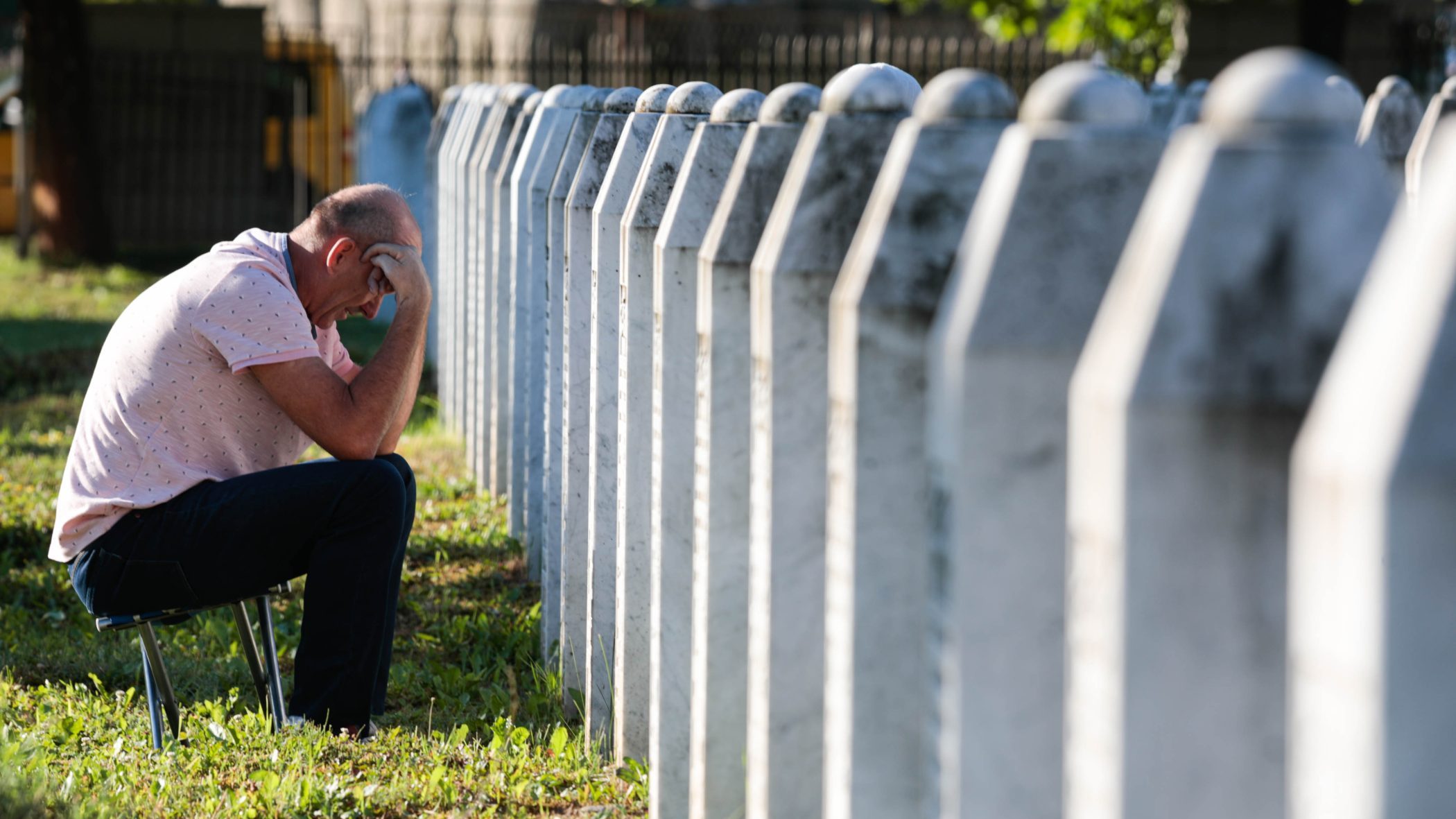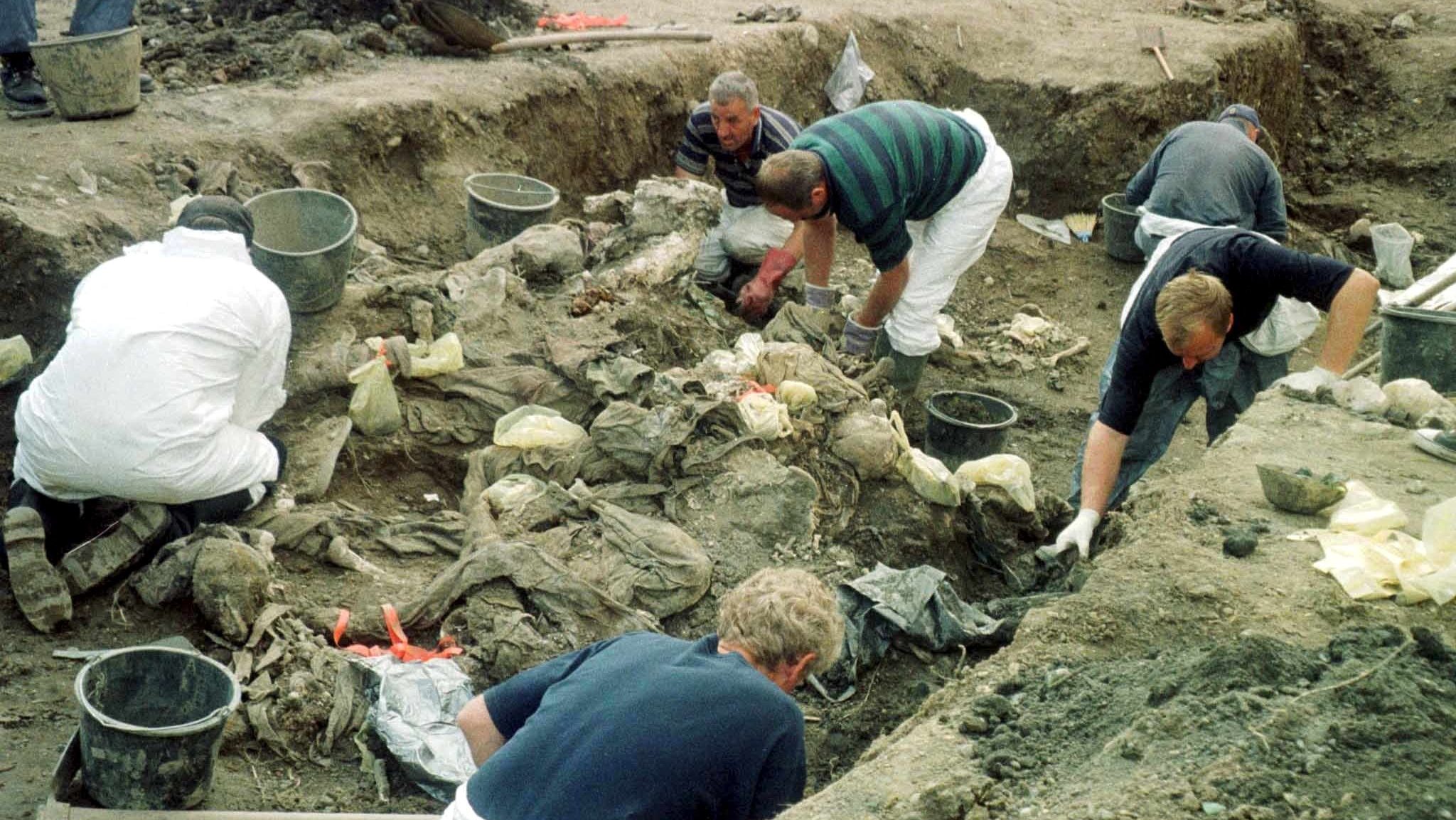This post is also available in: Bosnian
Nearly 24 years after the end of the war in Bosnia and Herzegovina, more than 7,000 people who went missing as a result of the conflict are still missing.
The lack of good-quality information on hidden grave sites, the passage of time and terrain shifts caused by landslides or floods are cited as the main reasons for a slowdown in the search for the remaining missing persons, according to an analysis carried out by BIRN in Bosnia and Herzegovina ahead of the International Day of the Disappeared on Friday.
Institutions dealing with search for the missing also cite a lack of well-trained staff and that fact that so many of the wartime missing – over 30,000 when the conflict ended in 1995 – have already been found.
Bosnia and Herzegovina’s Missing Persons Institute further notes that the remains of around 1,500 people whose identity has not been determined are being kept in ossuaries in the country.
However, associations of families of missing persons argue that the Bosnian Missing Persons Institute, the International Commission on Missing Persons and the Bosnian state prosecution should have found more of the remaining missing persons by now.
Police and security services ‘concealing information’
The Missing Persons Institute says that the search for the missing continues, but that the process has entered its most difficult phase because it is becoming more and more difficult to obtain genuine information about hidden grave sites.
“At the same time, institutions have documents that could lead to discovery of graves, but they keep them locked in their drawers. Intelligence services and police bodies, which are in possession of information from 1991 and 1992, are hiding the data that investigators need,” said Missing Persons Institute spokesperson Emza Fazlic.
The Bosnian prosecutor’s office admits that fewer and fewer mass graves are being discovered, adding that the passage of time makes the search for war victims’ remains more difficult, but the lack of reliable information constitutes the biggest obstacle.
“When searching for the missing, the most important thing is to have reliable and correct information on the locations where their remains are. There is less and less of such information, so we invest additional efforts through our investigations to obtain information on locations where mortal remains might be found,” said prosecutor’s office spokesperson Boris Grubesic.
Amor Masovic, a member of the board of directors of the Missing Persons Institute, said that information about hidden graves is still being stored in people’s heads, but witnesses who were involved in crimes aren’t willing to share their knowledge, partly because of the political climate.
“Messages from political leaders go against that, saying that those who offer and reveal such information will become traitors to their people, while those who should be criminally prosecuted for taking people away and forcibly making them disappear are heroes to these politicians,” Masovic said.
According to Masovic, most of the information that has been received over the past two decades eventually turned out to be “disinformation” – sometimes shared knowingly and sometimes unknowingly.
“The disinformation reaches families who are searching for their family members and gives them hope that they will find their child, parents, brother, sister… But, in the end it turns out to be just another disappointment that they experience over the years,” Masovic said.
Victims’ families dissatisfied with slowdown
The International Commission on Missing Persons notes that more than 70 per cent of the missing have been identified so far – a higher percentage than in conflicts anywhere else in the world.
According to the Missing Persons Institute, 317 remains were exhumed and 165 people identified in 2017, 132 remains were exhumed and 135 people identified in 2018, while 47 remains have been exhumed and 77 people identified during the first half of the current year.
The president of the Association of the Missing Persons of the Sarajevo-Romanija Region, Milan Mandic, blamed the Missing Persons Institute, the International Commission on Missing Persons and the state prosecution for the slowdown.
“They have the resources and they scatter them around. However, the smallest part of these funds are used for the main issue – the search for information about the missing and the search for the missing persons,” Mandic claimed.
He said that staff dealing with the issue should be “replaced with others who will do quality work” and focus on the ongoing search.
“I call on them to stop signing various declarations and agreements, as those things do not interest us, the families. We are interested in one thing only – finding our family members,” he added.
Last month, Bosnia and Herzegovina signed agreements with Croatia and Serbia aimed at improving cross-border cooperation in the process of finding missing persons and hidden graves, to enhance the sharing of information and enable joint exhumations.
Ahmet Grahic, president of the Association of Families of Captured and Missing Persons from the Municipality of Zvornik, also expressed dissatisfaction, arguing that the search for the missing has stalled.
Grahic said that witnesses who had information are dying, as are victims’ family members who have not yet found their loved ones.
“The law they adopted does not allow for trial excavations, but only direct ones after a report has been received. A whole team is then set up, resources are spent and nothing is found, and so they might find one or two graves out of a hundred. They always miss things, spend the money and often give up,” Grahic alleged.
He said that while the authorities dawdled, trees had grown over some potential grave sites and others had been covered up by landslides.
Josip Dreznjak, president of the Grabovica 93 Association of Croatian Victims, said that not a single body from the village, the site of a massacre in 1993, had been found, apart from two incomplete bodies that were handed over in 1994.
“We had some findings and the Missing Persons Institute and prosecution carried some excavations, but the information received turned out not to be true,” Dreznjak said.
The Missing Persons Institute argues that its current roster of 18 investigators is not sufficient for completing the process of finding the remaining wartime missing. To complete the job, they would need at least 50 investigators, specially-trained dogs and high-tech equipment like ground-penetrating radars.
Masovic said that it is hard to forecast when the completion of the process can be expected, but that it depends on political leaders sending out a clear message that mass grave sites must be revealed.
“When the message comes from the top, I believe many people will be encouraged, particularly those who are considering whether or not to share their information with us, be it by coming to our premises or anonymously,” Masovic said.
The International Commission on Missing Persons launched an online application in 2017 called ‘Report a Site’ to encourage people to share information about wartime graves anonymously.
By June this year, 19 reports had been submitted via the app, which it is hoped will aid the ongoing search for the country’s remaining 7,000 missing.




